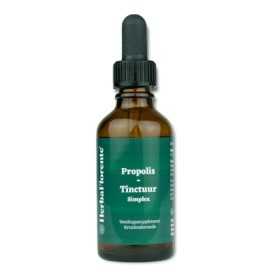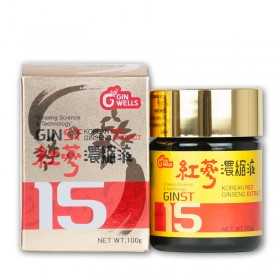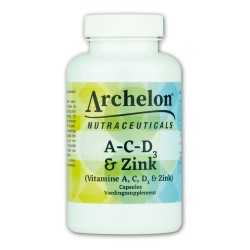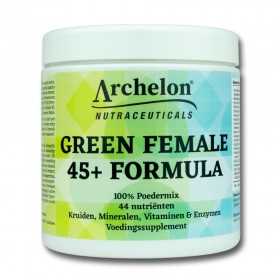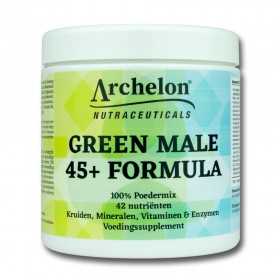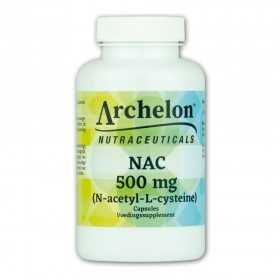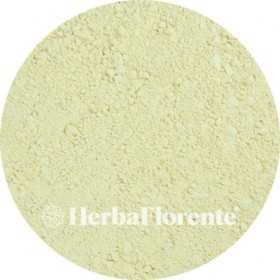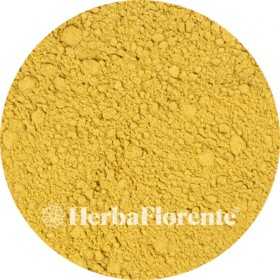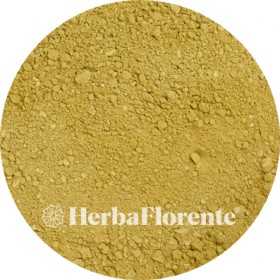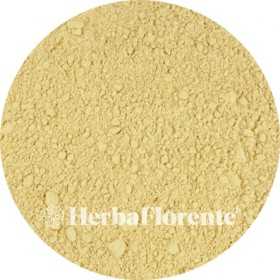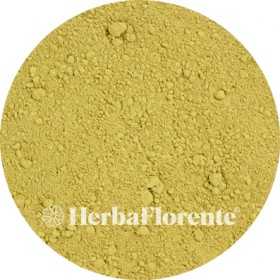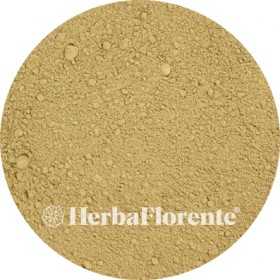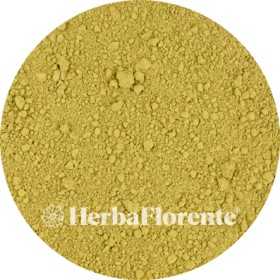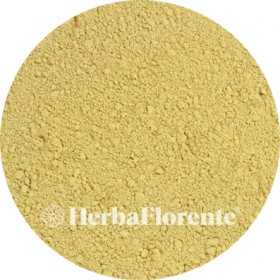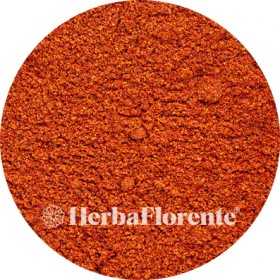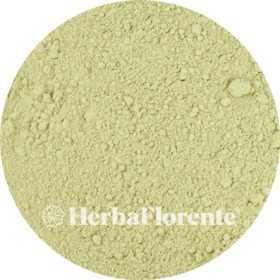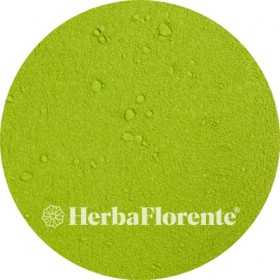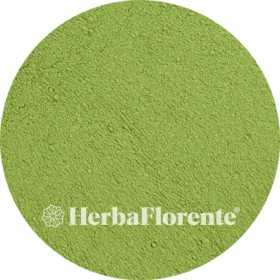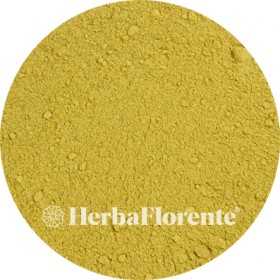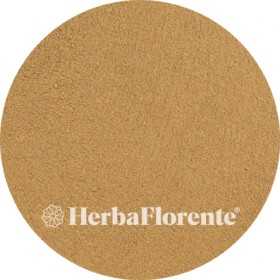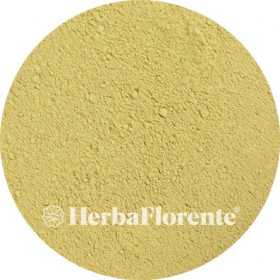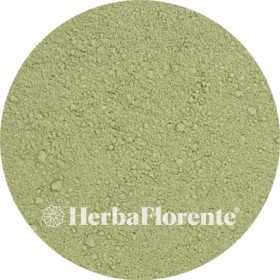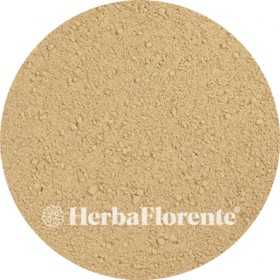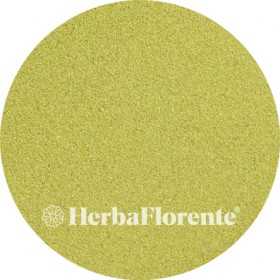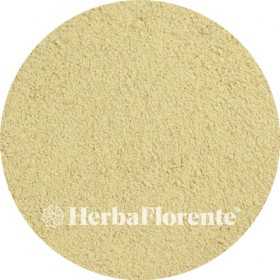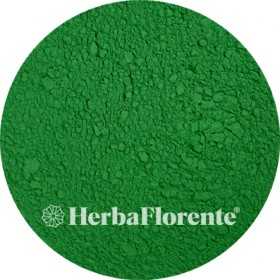A, B, C, .... X, Y, Z
There are 54 products.
Garlic - Allium sativi
Garlic (Allium sativum) has a beneficial effect on the circulatory system and the liver, while also supporting the immune system and regulating blood sugar levels.
Garlic belongs to the garlic family and produces a leafy, round flower shaft from the bulb in the spring. It is one of the oldest plants in herbalism. Although it is prized for its taste, garlic is also known for its strong smell.
Garlic belongs to the garlic family and produces a leafy, round flower shaft from the bulb in the spring. It is one of the oldest plants in herbalism. Although it is prized for its taste, garlic is also known for its strong smell.
€2.00
From: €2.00
Geranium - Pelargonium sidoides
The Cape geranium, also known as Pelargonium sidoides, is a South African geranium species that has been part of indigenous herbal lore for centuries. The locals call it 'umckaloabo'. This plant thrives in the wild among tall grass and aromatic flower beds on the slopes of the Cape coast. It has soft, velvety gray-green leaves and deep magenta-colored flowers. The dried and ground rhizomes are dark red in color. They have a soothing effect on the airways and are therefore suitable for providing support for airway problems.
€5.00
From: €5.00
Ginger - Zingiberis Thiz. Mund. officinalis
Ginger comes from the root of the ginger plant (Zingiber officinale) and is used as a spice in many countries because of its strong flavor. It contains various bioactive substances, including gingerol, shogaol and zingiberene. Ginger supports the immune system, promotes healthy digestion and has a beneficial effect on the heart and blood vessels. Additionally, ginger can promote well-being during vehicle travel.
€2.40
From: €2.40
Ginkgo (Maidenhair tree) - Ginkgo bilobae
Maidenhair tree (Ginkgo biloba), also known as the Japanese Temple Tree, has been used in traditional Chinese herbal medicine for centuries. Ginkgo biloba is used to improve blood circulation, promote concentration and support memory. The main components of ginkgo biloba are (bio)flavonoids (flavonglycosides), bilobalides and ginkgolides (terpene lactones).
It is a unique deciduous tree that is considered a species with no direct family ties. Charles Darwin called the ginkgo biloba a 'living fossil' because it has been around for about two hundred and fifty million years. Ginkgo originally comes from China.
It is a unique deciduous tree that is considered a species with no direct family ties. Charles Darwin called the ginkgo biloba a 'living fossil' because it has been around for about two hundred and fifty million years. Ginkgo originally comes from China.
€3.20
From: €3.20
Ginseng (Panax) - Panax ginseng
Panax Ginseng is a plant with a slow-growing, sturdy root. Panax Ginseng is considered one of the most important medicinal herbs in traditional Chinese medicine. In fact, it is even the world's most famous herb. Panax ginseng has been used for more than 5,000 years to optimize human health and well-being in Asia. In the world of Chinese ethnopharmacology, it has been used for more than 3,000 years.
Panax takes its name from the Greek word “panacea”, which means “all-healer”. Gingsen is currently the world's most popular and most powerful adaptogenic herb. Adaptogenic herbs help the body to deal with stress in a natural way and achieve a homeostatic balance between body and mind.
Panax takes its name from the Greek word “panacea”, which means “all-healer”. Gingsen is currently the world's most popular and most powerful adaptogenic herb. Adaptogenic herbs help the body to deal with stress in a natural way and achieve a homeostatic balance between body and mind.
€16.00
From: €16.00
Hawthorn (Leaf & Flower) - Crataegus laevigata, Crataegi
The two-stemmed hawthorn (Crataegus laevigata) is a natural source of beneficial substances. The flowers, leaves and to a lesser extent the berries of the hawthorn contain a rich variety of components, including flavonoids, procyanidins, vitamin C, tannins, glycosides and antioxidants. These substances have beneficial effects on the heart and contribute to a healthy lifestyle. Hawthorn is known for its calming properties and supports natural, deep sleep.
€2.00
From: €2.00
Juniper Berries - Juniper communis
The juniper berry (Juniperus communis) is rich in vitamin C and antioxidants, which occur naturally in its berries. These antioxidants protect our body cells against harmful influences such as pollution and sunlight. In addition, they support digestion and contribute to healthy kidney function and fluid balance.
The juniper is a conifer native to Europe, Asia and America. This tree bears flowers and berries at the same time, which can be green and black. The name Juniperus is derived from the Celtic word 'juneprus', meaning rough, prickly or bitter, and 'communis' meaning plain. Since ancient times, the berries have been used by Greeks and Romans for their health benefits.
The juniper is a conifer native to Europe, Asia and America. This tree bears flowers and berries at the same time, which can be green and black. The name Juniperus is derived from the Celtic word 'juneprus', meaning rough, prickly or bitter, and 'communis' meaning plain. Since ancient times, the berries have been used by Greeks and Romans for their health benefits.
€2.60
From: €2.60
Kelp - Laminariales
Kelp, a member of the brown algae (Laminariales) family, thrives in the cold waters of the major oceans. This large species of seaweed is an excellent source of iodine, an essential element for healthy thyroid function in humans.
In Asia, especially Japan, seaweed has been an integral part of the daily diet for centuries. A well-known kelp species is kombu (Laminaria japonica), which is often cooked with rice for sushi. In addition to being one of the largest plants in the world, kelp is known for growing extremely quickly, sometimes up to three meters per day.
In Asia, especially Japan, seaweed has been an integral part of the daily diet for centuries. A well-known kelp species is kombu (Laminaria japonica), which is often cooked with rice for sushi. In addition to being one of the largest plants in the world, kelp is known for growing extremely quickly, sometimes up to three meters per day.
€2.50
From: €2.50
Kumis Kutjing - Cat's whiskers - Orthosiphon aristatus
Cat's whisker (Orthosiphon aristatus), also known as Kumis Kutjing, has played an important role in Ayurvedic medicine for centuries due to its beneficial properties in treating urinary tract infections.
This plant belongs to the Lamiaceae family and thrives mainly in tropical and subtropical regions, preferring locations such as wetlands, along rivers and swamps, especially in Southeast Asia, especially Malaysia and Java. The name "cat's whisker" is derived from the white or lilac flowers with striking, thread-like stamens, sometimes up to 3 cm long.
This plant belongs to the Lamiaceae family and thrives mainly in tropical and subtropical regions, preferring locations such as wetlands, along rivers and swamps, especially in Southeast Asia, especially Malaysia and Java. The name "cat's whisker" is derived from the white or lilac flowers with striking, thread-like stamens, sometimes up to 3 cm long.
€2.30
From: €2.30
Licorice - Glycyrrhiza glabra, Liquiritiae
Licorice (Glycyrrhiza glabra) is a versatile herb that plays an important role in Ayurvedic medicine. It is known for its beneficial effects on digestion and maintaining flexible joints, while also soothing the respiratory tract.
This plant is grown in various parts of the world, including Europe, Asia and the Middle East. It is a hardy plant that even thrives in the Netherlands. However, it takes three to four years before the roots can be harvested.
In addition to the roots, the leaves can also be used, for example to make tea. Licorice is widely used in foods and pharmaceuticals because of its sweet taste and other ingredients.
This plant is grown in various parts of the world, including Europe, Asia and the Middle East. It is a hardy plant that even thrives in the Netherlands. However, it takes three to four years before the roots can be harvested.
In addition to the roots, the leaves can also be used, for example to make tea. Licorice is widely used in foods and pharmaceuticals because of its sweet taste and other ingredients.
€2.00
From: €2.00
Magnolia Berry (Schisandra) - Schisandrae chinensis
Schisandra, also known as the Schisandra berry (Schisandra chinensis), is known as one of the most important herbs in traditional Chinese medicine for promoting energy and vitality, and reducing stress. This dark red berry is rich in antioxidants, strengthens the immune system and promotes overall vitality. In addition, it provides protection and support to the liver and respiratory tract.
Schisandra has been used in traditional Chinese herbal medicine for over 2000 years. Only the berry with its seeds are used, harvested after the first frost and then dried in the sun. Schisandra is known as one of the most important herbs for promoting vitality.
Schisandra has been used in traditional Chinese herbal medicine for over 2000 years. Only the berry with its seeds are used, harvested after the first frost and then dried in the sun. Schisandra is known as one of the most important herbs for promoting vitality.
€7.50
From: €7.50
Marshmallow - Althaea officinalis
Marshmallow (Althaea officinalis) belongs to the mallow family (Malvaceae) and has been spread worldwide by human activity, especially to areas with suitable soil, humidity and climate.
The starch in the carrot, mixed with proteinaceous substances, was formerly used in making marshmallows and bacon. The leaves can be eaten cooked and the flowers can be used raw in salads.
In the medicinal field, marshmallow root has a soothing effect on the respiratory tract (source WHO) and is used in cough syrups.
The starch in the carrot, mixed with proteinaceous substances, was formerly used in making marshmallows and bacon. The leaves can be eaten cooked and the flowers can be used raw in salads.
In the medicinal field, marshmallow root has a soothing effect on the respiratory tract (source WHO) and is used in cough syrups.
€2.75
From: €2.75
Milk Thistle (Seed) - Sylibum marianum, Cardui Mariae
Milk thistle (Silybum marianum), also known as milk thistle or milk thistle, is a spiny plant native to the Mediterranean region, but which also grows in our area. It belongs to the composite family. Milk thistle has been used for centuries as a natural remedy to support liver and bile function. It can be used as part of a cleansing regimen to assist the liver in the detoxification process.
The seeds of milk thistle contain silymarin, a powerful antioxidant. Silymarin stimulates the liver in the natural detoxification process and thus supports liver function.
The seeds of milk thistle contain silymarin, a powerful antioxidant. Silymarin stimulates the liver in the natural detoxification process and thus supports liver function.
€2.00
From: €2.00
Moringa Tree - Moringa oleifera (Leaf Grounded)
Moringa oleifera, also known as the 'tree of life', thrives in Africa and Asia and is known for its rich nutritional value. The tree is a treasure trove of more than dozens of nutrients, including no fewer than 47 antioxidants. Containing minerals, proteins, vitamins, beta-carotene, amino acids and various phenols in abundance, the leaves of the moringa are the true storehouse of nutritional value.
For centuries, Asian and African cultures have recognized the benefits of moringa oleifera. The tree has become an integral part of their daily diet due to its versatile uses and nutritional value. Because of its abundant benefits, moringa oleifera is often affectionately referred to as "the tree of life."
For centuries, Asian and African cultures have recognized the benefits of moringa oleifera. The tree has become an integral part of their daily diet due to its versatile uses and nutritional value. Because of its abundant benefits, moringa oleifera is often affectionately referred to as "the tree of life."
€3.20
From: €3.20
Nettle - Urticae dioica
The nettle (Urtica dioica) is a powerful and versatile plant that occurs in many places, despite its irritating property to the touch. Known for its culinary uses, such as nettle soup and tea, the nettle is also known for its health benefits.
Nettle leaf is a traditional herbal medicine with various applications. It contributes to healthy skin, gives shine to the hair and strengthens the nails. In addition, it can help soothe the respiratory tract and maintain proper fluid balance. It also provides support to the heart and blood vessels.
Nettle leaf is a traditional herbal medicine with various applications. It contributes to healthy skin, gives shine to the hair and strengthens the nails. In addition, it can help soothe the respiratory tract and maintain proper fluid balance. It also provides support to the heart and blood vessels.
€2.40
From: €2.40
Oregano - Origani cetici
Oregano also known as wild marjoram, is a special herb that has been used for thousands of years for its beneficial properties. It supports healthy intestinal flora and promotes digestion. In addition, oregano has benefits for the heart, blood vessels and blood pressure.
The herb belongs to the Lamiaceae family, which also includes rosemary, thyme and mint. Oreganois is particularly rich in carvacrol, which gives it its characteristic spicy and slightly bitter taste. The most vigorous form of oregano grows in Mediterranean mountain areas, thriving on calcareous soil. During the spring, wild oregano blooms and residents go into the mountains to collect these aromatic herbs.
The herb belongs to the Lamiaceae family, which also includes rosemary, thyme and mint. Oreganois is particularly rich in carvacrol, which gives it its characteristic spicy and slightly bitter taste. The most vigorous form of oregano grows in Mediterranean mountain areas, thriving on calcareous soil. During the spring, wild oregano blooms and residents go into the mountains to collect these aromatic herbs.
€3.00
From: €3.00
Pau D'arco - Tabeuiae
Pau d'arco (Tabebuia avellanedae) is an imposing tree that thrives in the Amazon rainforest. The bark of the pau d'arco has been used for centuries in traditional herbal medicine for its diverse uses, including its supportive effects on the immune system.
The inner layer of the bark of Tabebuia avellanedae is packed with flavonoids, powerful antioxidants that protect our bodies against oxidative damage caused by free radicals. In addition, it contains a significant amount of quinones. More than 20 quinone compounds have already been discovered in the bark of the pau d'arco, such as lapachol and beta-lapachone. In addition, the bark contains substances that help defend against unfavorable bacteria and fungi.
The inner layer of the bark of Tabebuia avellanedae is packed with flavonoids, powerful antioxidants that protect our bodies against oxidative damage caused by free radicals. In addition, it contains a significant amount of quinones. More than 20 quinone compounds have already been discovered in the bark of the pau d'arco, such as lapachol and beta-lapachone. In addition, the bark contains substances that help defend against unfavorable bacteria and fungi.
€2.60
From: €2.60
Red Clover - Trifolii Rubr. pratense
Red clover (Trifolium pratense) grows naturally in Europe and Central Asia. Usually the leaves of red clover have three parts and a light purple flower blooms in the middle. In addition to the high content of isoflavones, which are bioactive substances that fall under polyphenols, the flower heads of red clover are also rich in vitamin C, B1, B2, B3, beta-carotene and choline.
Red clover can help with menopausal symptoms such as hot flashes, mood swings and irritability. In addition, it supports heart health and contributes to the condition of the blood vessels. It can also be used to maintain strong bones.
Red clover can help with menopausal symptoms such as hot flashes, mood swings and irritability. In addition, it supports heart health and contributes to the condition of the blood vessels. It can also be used to maintain strong bones.
€3.20
From: €3.20
Ribwort Plantain - Plantaginis lanceolata
Ribwort Plantain (Plantago lanceolata) is a native plant that thrives in Europe, parts of Asia, North Africa and North America. The young leaves of this plant contain a rich mix of beneficial substances, including mucilages, tannins, bitter substances, flavonoids and minerals such as potassium and zinc. Best known for its soothing effect on the throat thanks to its mucilages, plantain also provides support for the immune system and promotes normal intestinal function. In addition, it can help maintain flexible joints and is beneficial for the liver.
€2.40
From: €2.40
Rose Root - Rhodiola rosea
Out-of-Stock
Rose root (Rhodiola rosea) also known as the 'golden root', is a succulent plant that thrives in cold, rocky areas around the world. The roots emit a characteristic scent of roses. This herb has long been used in herbal medicine.
It contains protective antioxidants that help our body cells. Rose root supports both physical and mental balance in our body. It helps keep the mind clear, improves mood and promotes concentration. Some of the bioactive compounds in rose root include rosavine and salidroside, which are thought to be responsible for Rhodiola rosea's calming and uplifting effects.
It contains protective antioxidants that help our body cells. Rose root supports both physical and mental balance in our body. It helps keep the mind clear, improves mood and promotes concentration. Some of the bioactive compounds in rose root include rosavine and salidroside, which are thought to be responsible for Rhodiola rosea's calming and uplifting effects.
€20.00
From: €20.00
Rosemary - Rosmarini officinalis
Rosemary (Rosmarinus officinalis L.) is a fragrant, compact shrub belonging to the Lamiaceae family. This versatile herb has been used for centuries for various purposes, both culinary and for health promotion. Originally from Mediterranean regions, the Rosmarinus officinalis displays lush blooms in spring with small, lavender blue flowers.
The name "rosemary" has its origins in the Latin "ros" (roris), meaning "dew", and "marinus", meaning "sea": "dew of the sea". Since ancient times, by both the ancient Greeks and Romans, Rosmarinus officinalis has been valued for its health-supporting properties. It helps with digestion, strengthens the immune system and contains antioxidants.
The name "rosemary" has its origins in the Latin "ros" (roris), meaning "dew", and "marinus", meaning "sea": "dew of the sea". Since ancient times, by both the ancient Greeks and Romans, Rosmarinus officinalis has been valued for its health-supporting properties. It helps with digestion, strengthens the immune system and contains antioxidants.
€2.00
From: €2.00
Slippery Elm - Ulmi pubescent - Ulmus rubra
The Slippery elm (Ulmus rubra), also known as slippery elm, was initially mistaken for the Ulmus americana in 1753. It was not until 1793 that researchers discovered that it was a different species and gave it the name Ulmus rubra. This deciduous tree is mainly found in the humid highlands east of North America.
The slippery elm has traditionally had many uses in America. The tree grows quickly and produces durable wood that does not rot quickly. The strong fibers are often used to make thread or rope and are even suitable for clothing production.
The inner bark of the slippery elm is slimy and is often used to make tea. The dried and ground leaves are also used as tea.
The slippery elm has traditionally had many uses in America. The tree grows quickly and produces durable wood that does not rot quickly. The strong fibers are often used to make thread or rope and are even suitable for clothing production.
The inner bark of the slippery elm is slimy and is often used to make tea. The dried and ground leaves are also used as tea.
€9.30
From: €9.30
Spirulina - Spirulina platensis
Spirulina, a type of algae, provides support to the immune system through its rich nutrients and relieves fatigue.
The blue-green spirulina is a type of algae that contains both chlorophyll (green pigment) and phycocyanin (blue pigment). These single-celled algae form spiral microscopic strands and thrive in warm, fresh water.
With its abundance of essential nutrients, spirulina is invaluable to our body. It contains more than 60% complete protein, almost three times more than beef, and is rich in vitamin B complex, vitamin E, carotenoids, iron, manganese, zinc and essential fatty acids such as gamma-linolenic acid. With ten different mixed carotenoids, spirulina is the most beta-carotene-rich food known.
The blue-green spirulina is a type of algae that contains both chlorophyll (green pigment) and phycocyanin (blue pigment). These single-celled algae form spiral microscopic strands and thrive in warm, fresh water.
With its abundance of essential nutrients, spirulina is invaluable to our body. It contains more than 60% complete protein, almost three times more than beef, and is rich in vitamin B complex, vitamin E, carotenoids, iron, manganese, zinc and essential fatty acids such as gamma-linolenic acid. With ten different mixed carotenoids, spirulina is the most beta-carotene-rich food known.
€2.50
From: €2.50
Thyme - Thymii vulgaris
Thyme (Thymus vulgaris L.) is not only a great seasoning in the kitchen, but also an ally for our health. This herb, recognizable by its characteristic smell, soothes the respiratory tract and promotes freer breathing. In addition, thyme supports digestion.
This herb grows wild in Europe, Asia and Africa and thrives in hardy shrubs about 40 centimeters high, even on dry and stony soils. Both the leaves and flowers of thyme contain active substances that benefit our health. The ancient Greeks and Romans already used real thyme to ease their breathing. Today, thyme is still used in licorice and syrups for its soothing effects on the respiratory tract.
This herb grows wild in Europe, Asia and Africa and thrives in hardy shrubs about 40 centimeters high, even on dry and stony soils. Both the leaves and flowers of thyme contain active substances that benefit our health. The ancient Greeks and Romans already used real thyme to ease their breathing. Today, thyme is still used in licorice and syrups for its soothing effects on the respiratory tract.
€2.20
From: €2.20

